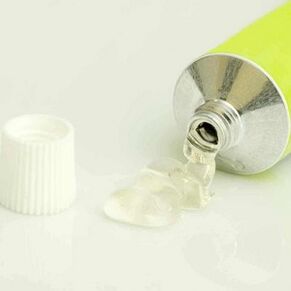To maximally protect your health from serious consequences, you need to familiarize yourself in detail with what it is - pelvic varicose veins, how it manifests itself and what treatment methods exist.
Reasons

IMGT - what is it? This is a complex medical problem that in most cases affects the fragile female body. Varicose veins of the hip occur for several reasons:
- Pregnancyis the leading cause of the onset of pelvic vascular pathology. During pregnancy, the most powerful hormonal changes occur in a woman's body, the uterus exerts the greatest possible pressure on the vascular system of the pelvis. The end result is a significant impairment of blood flow. At risk are also women who have had difficult births.
- Heritage. Vzmstrongxz VVMT, fragile and thin venous walls, defects in venous valves, all of which can be transmitted through genes.
- Inflammatory processes.Various types of diseases of the female reproductive system, which are inflammatory in nature - a direct route to varicose veins.
- Highly active female hormones.Abnormal production of female hormones can provoke VRV.
- Sexual contact. Many couples actively use such an unreliable method of contraception as abortion. In addition to the dubious method of protection, broken relationships can cause a woman to have VVMT. Surprisingly, but the pathology of the pelvic veins can occur in the absence of orgasms in a woman during sexual intercourse.
- Minimum Activity. Sedentary work, minimal walking, sedentary life - all these are the causes of varicose veins, and not only the pelvis, but also the lower extremities.
- Heavy physical strengthening.An overly active lifestyle, lifting weights, regularly carrying heavy items, for women can result in varicose veins.
- Blocked veins.Blockage, venous blockage (phlebostasis) and blockage of the veins of the ovaries, uterus and fallopian tubes lead to varicose veins.
According to statistics, VVMT is often diagnosed in girls aged 16-17 (about 20% of all pathology detection cases). However, the disease is more relentless to older women - 80% of women over the age of 45 are forced to fight varicose veins of the pelvic organs.
Symptoms
The symptoms of varicose veins of the pelvis are very different. The difficulty of diagnosing at an early stage of the disease is that most of these symptoms in women are attributed to a formal, temporary dysfunction in the body.

By not giving too much importance to congenital diseases, a woman then has to deal with the already advanced stage of pathology, supported by numerous complications.
The main symptoms are:
- regular menstrual irregularities;
- severe traction pain in the lower abdomen (worsening after sexual intercourse, lifting weights, standing or sitting for a long time, hypothermia, as well as moments of nervous tension);
- urinary disorder;
- specific discharge from the genital tract;
- increased the negative emotional background in the period before menstruation;
- appearance of venous networks and cavities characteristic of varicose veins in thigh, buttocks and perineum.
The disease can present with 2-3 symptoms. Some women have noticed the appearance of an absolutely complete list of the above symptoms.
Diagnosis
Varicose veins - ecstasy of the pelvic veins, leading to a violation of the outflow of blood from the external and internal genitals. Careful examinations are required to diagnose this disease.In modern medicine, the followingmethods are used to study the vascular system of the pelvic organs:
- ultrasound examination (ultrasound);
- dopplerography;
- phlebography;
- laparoscopy.
Laparoscopyis extremely rarely used, in cases where there is a risk of serious concomitant pathologies. Performed using an endoscope.Requires a puncture in the peritoneal region.
Ultrasoundis a common form of diagnosis, widely practiced in many fields of medicine. Allows the doctor to see an overview of the condition of the pelvic organs. This type of examination brings a minimum of concern to the patient and does not require any surgical intervention.
Doppler ultrasound of the pelvic veinsis an ultrasound examination of the vascular system, which allows early detection of venous valve dysfunction. During the examination, the doctor has the opportunity to get a visual representation of the condition of the veins of the pelvic organs, displayed on a special screen.
Pelvic phlebographyis a radiograph. Before the start of the study, the patient is injected with a contrast agent, which allows maximum examination of the condition of the veins, the presence of blood clots, clots and processes stagnant in them.
Methods for treating varicose veins
Treatment of varicose veins of the pelvis depends on the stage of the disease:
- In the initial stagethe veins dilate by no more than 5 millimeters. The most dilated veins are in the upper region of the left ovary.
- In the second stage, the veins dilate by no more than 10 millimeters. The pathology covers both the left and right ovaries as well as the uterine veins.
- In the third stagethe veins are maximally enlarged, more than 10 millimeters. Varicose veins are often accompanied by an oncological neoplasm (tumor of a benign or malignant nature).
Doctors say it is impossible to get rid of varicose veins. However, this is not a reason to give up and allow the disease to progress. High quality and timely treatment will help slow the destruction of veins, restore blood flow,eliminate symptoms and significantly improve a woman's quality of life.
High quality and timely treatment will help slow the destruction of veins, restore blood flow,eliminate symptoms and significantly improve a woman's quality of life.
Phase I
First of all, it is necessary to wear special medical underwear. Use medicines in the form of gels, oils and creams, as well as medicines in the form of capsules and tablets (which help to normalize blood flow and strengthen the walls of blood vessels).
You need to start eating right - a maximum of fiber, vitamins, fruits and vegetables, a minimum of fatty, salty, spicy, fried and smoked foods.
Phase II
Active medication support, diet food, physiotherapy exercises, therapeutic freedom, healthier lifestyle - this is the treatment formula. To enhance the therapeutic effect, you can connect the recipes of traditional medicine.
At an early stage, it is extremely important to take powerful medications thatincrease the tone of veins and blood vesselsas well as resist blood clot formation.
It is imperative that you have regular check-ups and consultations with your doctor. In case of deteriorating health, the doctor may decide on a more drastic method of treatment.
In some cases, the attending physician will prescribe an embolization. By introducing a special preparation (containing a sclerosing substance), blood flow and the structure of veins and vessels are restored.
Phase III
When you diagnose the third stage of the disease, especially if varicose veins are accompanied by an oncological neoplasm in the form of a tumor, conservative treatment will be absolutely ineffective.
The only way to cope with the disease is surgery. The incision and ligation of the vein damaged by varicose veins is performed.
Unfortunately, even such a cardinal method as surgery is not an absolute guarantee of complete elimination of the disease. In most cases, relapse is inevitable.
Preventive measures

As you know, a disease is easier to prevent than to cure. There are some simple methods of prevention, the observance of which will help protect the body from this disease:
- Normalize mode of operation. Prolonged stay in a static position adversely affects the vascular system. If by nature it is necessary to sit at the computer all day, or vice versa - you need active work on foot, it is important to take a vacation. During a break, do simple warm-up exercises for a few minutes. This will not only allow you to relax and stretch your muscles, but also restore blood flow. It is also necessary to minimize the erection of heavy objects.
- Stable bowel function.Good stomach function, lack of constipation and regular healthy bowel movements will minimize the presence of excess waste in the body. This requires high quality food, a large amount of fiber, lack of alcohol and raw food.
- Contrast shower.This method will not only strengthen the immune system, but also improve the functioning of the circulatory system. To prevent varicose veins of the small pelvis, the flow of water should not be forgotten to be directed to the perineal area.
Taking periodic medications. The use of creams and oils, as well as the passage of preventive treatment, significantly increases the chances of protecting the body from varicose veins. Each year it is necessary to undergo 4 courses of medication aimed at strengthening the walls of veins and blood vessels, to normalize blood flow and protect the circulatory system from blood clots.
Before prophylactic treatment and medication, you should consult your doctor!
Conclusion
So varicose veins of the pelvis are an insidious disease that can have serious consequences, and it is also very difficult to treat.
To prevent serious health problems, you need to take good care of your body, and in case of the first signs of varicose veins, seek help from a phlebologist immediately.












































